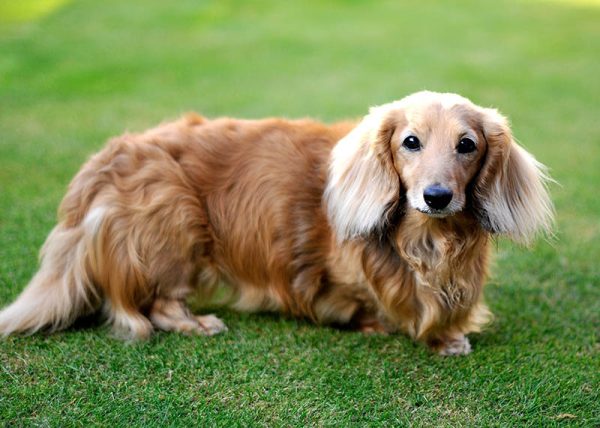The Dachshund Doberman mix, affectionately known as the Doxieberman, is a captivating hybrid that combines the unique characteristics of two distinct breeds—the determined Dachshund and the noble Doberman. This blend creates a dog with a striking appearance, an intriguing mix of personality traits, and a loyal temperament. Whether you’re drawn to their playful energy or their strong protective instincts, this mix has much to offer.
In this comprehensive guide, we’ll explore everything you need to know about the Doxieberman, including their history, appearance, temperament, training needs, health considerations, and more.
Contents
- 1 Origins of the Doxieberman: A Unique Blend
- 2 Physical Characteristics: The Doxieberman’s Unique Look
- 3 Temperament: A Loyal and Lively Companion
- 4 Training and Exercise: Keeping Up with a Doxieberman
- 5 Health Considerations: Keeping Your Doxieberman Healthy
- 6 Grooming and Maintenance
- 7 Is a Doxieberman Right for You?
Origins of the Doxieberman: A Unique Blend

The Doxieberman is a relatively modern hybrid, developed from two breeds with deep roots in their respective histories:
Dachshund: Originating in Germany, the Dachshund was bred for hunting badgers, with its long body and short legs perfectly suited for navigating tunnels. Dachshunds are fearless, independent, and playful, though their tenacious nature can lead to a streak of stubbornness.
Doberman: The Doberman, a much larger and more imposing breed, was also bred in Germany, initially designed as a loyal guard dog by Karl Friedrich Louis Dobermann in the late 19th century. Known for their intelligence, agility, and unwavering loyalty, Dobermans are often employed in roles like search-and-rescue, police work, and military service.
The Doxieberman is the result of crossbreeding these two distinct breeds, with the goal of creating a dog that combines the intelligence, loyalty, and protective nature of the Doberman with the playful, adventurous spirit of the Dachshund.
Physical Characteristics: The Doxieberman’s Unique Look
As a hybrid breed, the appearance of a Doxieberman can vary widely, depending on the traits inherited from each parent. However, they generally exhibit a blend of features that make them stand out.
- Size and Build: Most Doxiebermans are medium-sized dogs, typically standing 12–18 inches tall at the shoulder and weighing 15–40 pounds. They often have a long, low body like the Dachshund but with the Doberman’s muscular frame and athletic posture.
- Coat: Their coats can range from smooth and glossy to wiry or scruffy, depending on the dominant genetic influence. Common colors include black, red, brown, tan, and combinations of these shades, often with Doberman-like markings.
- Facial Features: They often have a pointed muzzle and expressive eyes, with ears that may be long and floppy like a Dachshund’s or slightly more erect like a Doberman’s.
The mix of physical traits ensures that each Doxieberman has a truly unique appearance, making them a head-turner wherever they go.
Temperament: A Loyal and Lively Companion
The Doxieberman is known for its vibrant personality and unwavering devotion to its family. While each dog’s temperament may vary, there are several common traits among this hybrid breed:
- Loyalty and Protectiveness: Like the Doberman, the Doxieberman is fiercely loyal and protective. They are excellent watchdogs, alerting their owners to strangers or unusual activity, though proper training is essential to prevent overprotectiveness.
- Playfulness and Energy: Thanks to their Dachshund lineage, Doxiebermans have a playful and curious nature. They enjoy interactive play and mental challenges, making them a great choice for active families.
- Intelligence: Both parent breeds are intelligent, and the Doxieberman inherits this trait in abundance. They are quick learners but may display occasional stubbornness, particularly if they take after their Dachshund side.
- Socialization Needs: Early socialization is crucial for this mix, as their protective instincts can make them wary of strangers or new situations. When properly socialized, they are friendly and adaptable.
While they are loving and gentle with their families, Doxiebermans thrive in environments where they receive consistent attention, mental stimulation, and opportunities to bond with their owners.
Training and Exercise: Keeping Up with a Doxieberman

The Doxieberman’s intelligence and energy levels require dedicated training and regular exercise to keep them mentally and physically fulfilled.
Training Tips:
- Start Early: Begin training as soon as possible, focusing on basic commands and socialization. Early exposure to different environments, people, and animals helps build a well-adjusted adult dog.
- Positive Reinforcement: Use treats, praise, and rewards to encourage good behavior. Harsh training methods can lead to fear or resistance in this sensitive breed.
- Be Patient and Consistent: The Dachshund’s stubborn streak can make training a challenge, but with patience and consistency, the Doxieberman will quickly learn and thrive.
Exercise Requirements:
Doxiebermans are energetic dogs that need daily physical activity to stay healthy and happy. Aim for at least 60 minutes of exercise per day, including walks, playtime, and interactive games like fetch or agility training.
Health Considerations: Keeping Your Doxieberman Healthy

As a hybrid breed, the Doxieberman can inherit health issues from either parent. Potential concerns include:
- Hip Dysplasia: Common in Dobermans, this condition affects the hip joints and can lead to pain or mobility issues.
- Intervertebral Disc Disease (IVDD): Dachshunds are prone to spinal problems due to their elongated bodies, and this risk can carry over to their mixed offspring.
- Bloat: A life-threatening condition that affects larger breeds like the Doberman, where the stomach twists and fills with gas. Preventive measures include feeding smaller meals and avoiding vigorous activity after eating.
- Eye Conditions: Both parent breeds can be prone to progressive retinal atrophy and other eye issues, so regular checkups are important.
Routine veterinary visits, a balanced diet, and regular exercise can go a long way in keeping a Doxieberman healthy and happy.
Grooming and Maintenance
The grooming needs of a Doxieberman depend on their coat type:
- Smooth Coats: Require weekly brushing to remove loose hair and maintain shine.
- Wire-Haired Coats: May need more frequent brushing and occasional trimming.
Regardless of coat type, regular grooming practices such as nail trimming, ear cleaning, and dental care are essential for overall health.
Is a Doxieberman Right for You?

The Doxieberman is a unique hybrid that combines loyalty, intelligence, and playfulness in a medium-sized package. They thrive in active households where they can receive consistent training, exercise, and attention. While their protective instincts make them excellent watchdogs, their stubbornness and energy levels may pose challenges for inexperienced dog owners.
